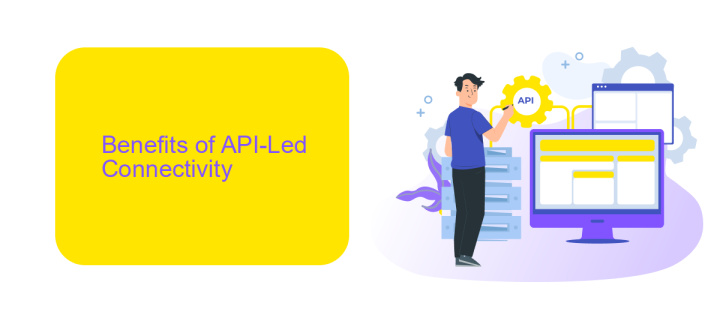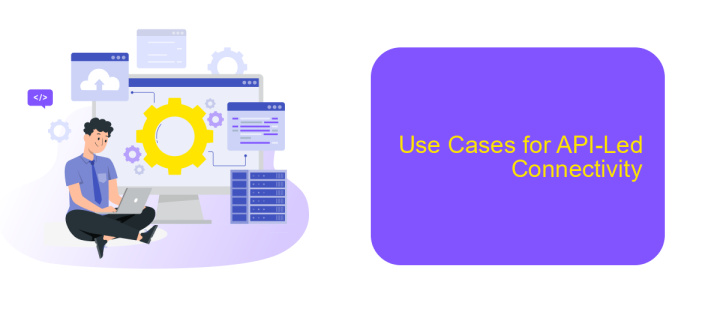What is API Led Connectivity in MuleSoft
API Led Connectivity in MuleSoft is a strategic approach to connecting applications, data, and devices through reusable and purposeful APIs. This method organizes APIs into three distinct layers—System, Process, and Experience—each serving a specific function to streamline integration, enhance agility, and foster innovation. In this article, we'll explore the fundamentals and benefits of API Led Connectivity in MuleSoft.
Introduction to API-Led Connectivity
API-led connectivity is a design approach for connecting data to applications through reusable and purposeful APIs. This method enables organizations to build an application network using APIs to integrate various services and systems efficiently. It is a strategic way to enhance agility and streamline the development process, ensuring faster time to market and improved scalability.
- System APIs: Access core systems of record and expose data.
- Process APIs: Orchestrate data and processes across multiple systems.
- Experience APIs: Deliver data to end-user interfaces and devices.
With tools like ApiX-Drive, businesses can easily configure integrations without extensive coding knowledge. ApiX-Drive simplifies the connection of disparate systems, allowing for seamless data flow and synchronization. By leveraging API-led connectivity, organizations can achieve more flexible and robust integration solutions, enhancing their overall digital transformation efforts.
Benefits of API-Led Connectivity

API-Led Connectivity in MuleSoft offers a structured approach to integration, enhancing agility and efficiency. By breaking down complex systems into reusable APIs, organizations can streamline development processes and reduce redundancy. This modular approach not only accelerates project timelines but also simplifies maintenance and updates. Furthermore, it promotes collaboration between teams, as different departments can work on distinct APIs simultaneously, ensuring faster delivery and innovation.
Another significant benefit is the scalability and flexibility it provides. With services like ApiX-Drive, businesses can effortlessly connect various applications and automate workflows without extensive coding knowledge. This enables seamless data flow and real-time synchronization across platforms, enhancing operational efficiency. Additionally, API-Led Connectivity supports better security practices by allowing granular control over data access and permissions, ensuring that sensitive information is protected while still being accessible to authorized users.
Key Features of API-Led Connectivity in MuleSoft

API-led connectivity in MuleSoft revolutionizes the way businesses integrate their applications and data. By leveraging a structured, reusable approach to API development, organizations can ensure seamless communication between disparate systems, enhancing overall efficiency and agility.
- Reusable APIs: Create modular APIs that can be reused across various projects, reducing development time and effort.
- Layered Architecture: Implement a three-layered architecture (System, Process, and Experience APIs) to streamline integration and ensure scalability.
- Centralized Management: Utilize Anypoint Platform for unified API management, providing visibility and control over all integrations.
- Enhanced Security: Secure APIs with robust policies, ensuring data protection and compliance with industry standards.
- Seamless Integration: Leverage services like ApiX-Drive to effortlessly connect various applications and automate workflows.
By adopting API-led connectivity, businesses can achieve a more agile and responsive IT environment. This approach not only simplifies integration but also promotes innovation, allowing companies to quickly adapt to changing market demands and deliver superior customer experiences.
Use Cases for API-Led Connectivity

API-led connectivity in MuleSoft is a strategic approach that enables organizations to unlock and integrate data from various systems more efficiently. By leveraging APIs, businesses can create reusable and scalable connections that streamline processes and improve agility. This method is particularly useful for companies looking to modernize their IT infrastructure and enhance their digital transformation efforts.
One of the primary use cases for API-led connectivity is in the integration of disparate systems. For example, companies often need to connect their CRM, ERP, and marketing automation platforms to ensure seamless data flow and real-time updates. This connectivity approach allows for better customer insights and more informed decision-making. Additionally, it can significantly reduce the time and cost associated with traditional point-to-point integrations.
- Real-time data synchronization between CRM and ERP systems
- Enhanced customer experience by integrating marketing automation tools
- Streamlined supply chain management through connected logistics platforms
- Improved financial reporting with integrated accounting systems
Services like ApiX-Drive can further simplify the integration process by offering pre-built connectors and user-friendly interfaces. This enables businesses to set up and manage their integrations without extensive coding knowledge, making API-led connectivity more accessible and efficient. Overall, adopting this approach can lead to significant improvements in operational efficiency and business agility.
Implementation of API-Led Connectivity in MuleSoft
Implementing API-led connectivity in MuleSoft begins with designing a layered architecture that separates APIs into three distinct categories: System APIs, Process APIs, and Experience APIs. System APIs handle core system interactions, Process APIs integrate and orchestrate data across systems, and Experience APIs deliver the data to end-user applications. This approach ensures a modular and reusable architecture, allowing for efficient and scalable integration solutions. Tools like MuleSoft's Anypoint Platform facilitate this process by providing a comprehensive suite for API design, management, and monitoring.
To streamline the integration process further, services like ApiX-Drive can be utilized. ApiX-Drive offers a user-friendly interface for setting up integrations without extensive coding, making it easier to connect various applications and automate workflows. By leveraging ApiX-Drive alongside MuleSoft, businesses can accelerate their API-led connectivity implementation, ensuring seamless data flow and enhanced operational efficiency. This combination empowers organizations to respond quickly to changing business needs and deliver superior digital experiences.
FAQ
What is API Led Connectivity in MuleSoft?
What are the three layers of API Led Connectivity?
Why is API Led Connectivity important?
How does API Led Connectivity improve scalability?
Can API Led Connectivity be automated and integrated easily?
Time is the most valuable resource in today's business realities. By eliminating the routine from work processes, you will get more opportunities to implement the most daring plans and ideas. Choose – you can continue to waste time, money and nerves on inefficient solutions, or you can use ApiX-Drive, automating work processes and achieving results with minimal investment of money, effort and human resources.

